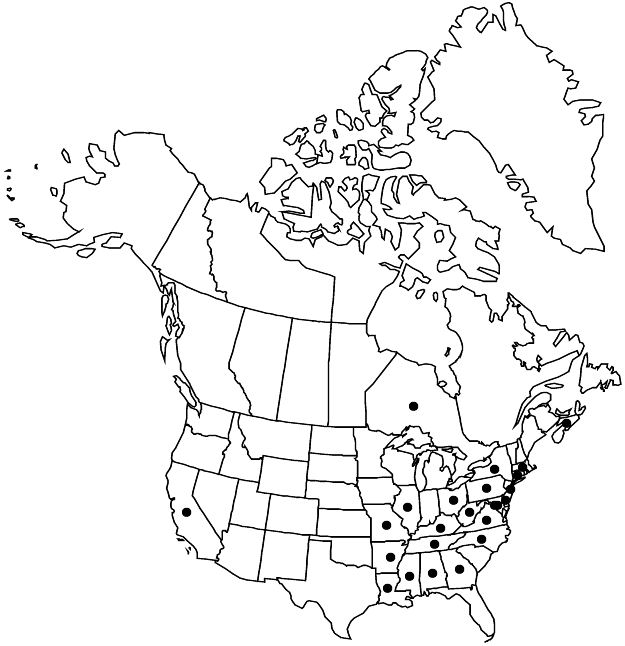Spiraea prunifolia
Fl. Jap. 1: 131, plate 70. 1840.
Shrubs, 10–30 dm. Stems erect, virgate, branched. Leaves: petiole 1–4 mm, pubescent; blade usually ovate to elliptic, sometimes oblanceolate, 1–4 (–5) × 1–2 cm, membranous, base obtuse, margins serrulate, usually from near base to apex, sometimes only distally from middle, rarely nearly entire with few teeth apically, venation pinnate cladodromous, secondary-veins not prominent, apex acute to obtuse, abaxial surface lanate to glabrescent, adaxial glabrate. Inflorescences mostly axillary, usually hemispheric panicles, sometimes simple fascicles, 3–6-flowered, sessile, 2–3 × 1–3 cm; bractlets 3–7 × 3–5 mm; branches pubescent. Pedicels 10–30 mm, pubescent. Flowers 5–15 mm diam.; hypanthia campanulate, 1–1.2 mm, abaxial surface glabrous or sparsely hairy, adaxial glabrous; sepals ovate to ovate-triangular, 1–3 mm; petals white to cream, often with more than a single whorl of petals in most commonly escaped form, ovate to obovate, 2–10 mm; staminodes 10–16, irregularly fused; stamens 20–25, 0.5 times petal length. Follicles oblanceoloid, 1.5–2 mm, glabrous, adaxial suture sparsely hairy. 2n = 18.
Phenology: Flowering Apr–Aug; fruiting May–Nov.
Habitat: Abandoned homesteads, roadsides, meadows, riparian zones
Elevation: 0–300 m
Distribution

Introduced; N.S., Ont., Ala., Ark., Calif., Conn., Del., D.C., Ga., Ill., Ky., La., Md., Mass., Miss., Mo., N.J., N.Y., N.C., Ohio, Pa., Tenn., Va., W.Va., Asia (China), Asia (Japan), Asia (Korea)
Discussion
Spiraea prunifolia is an ornamental shrub that can be found established in many areas. The double-flowered variant (most common in cultivation) may be assigned to var. prunifolia; single-flowered forms may be assigned to three other varieties [see Lu L. T. and C. Alexander (2003) for a key to native varieties in China]. L. H. Bailey et al. (1949), W. J. Bean (1970–1988, vol. 4), H. S. Maxwell and S. G. Knees (1989), A. Huxley et al. (1992, vol. 4), and references therein provide useful additional information on variation in S. prunifolia. M. De Cleene and J. De Ley (1981) noted that S. prunifolia and S. ×vanhouttei (see discussion below) are hosts to infectious hairy-root.
Selected References
None.